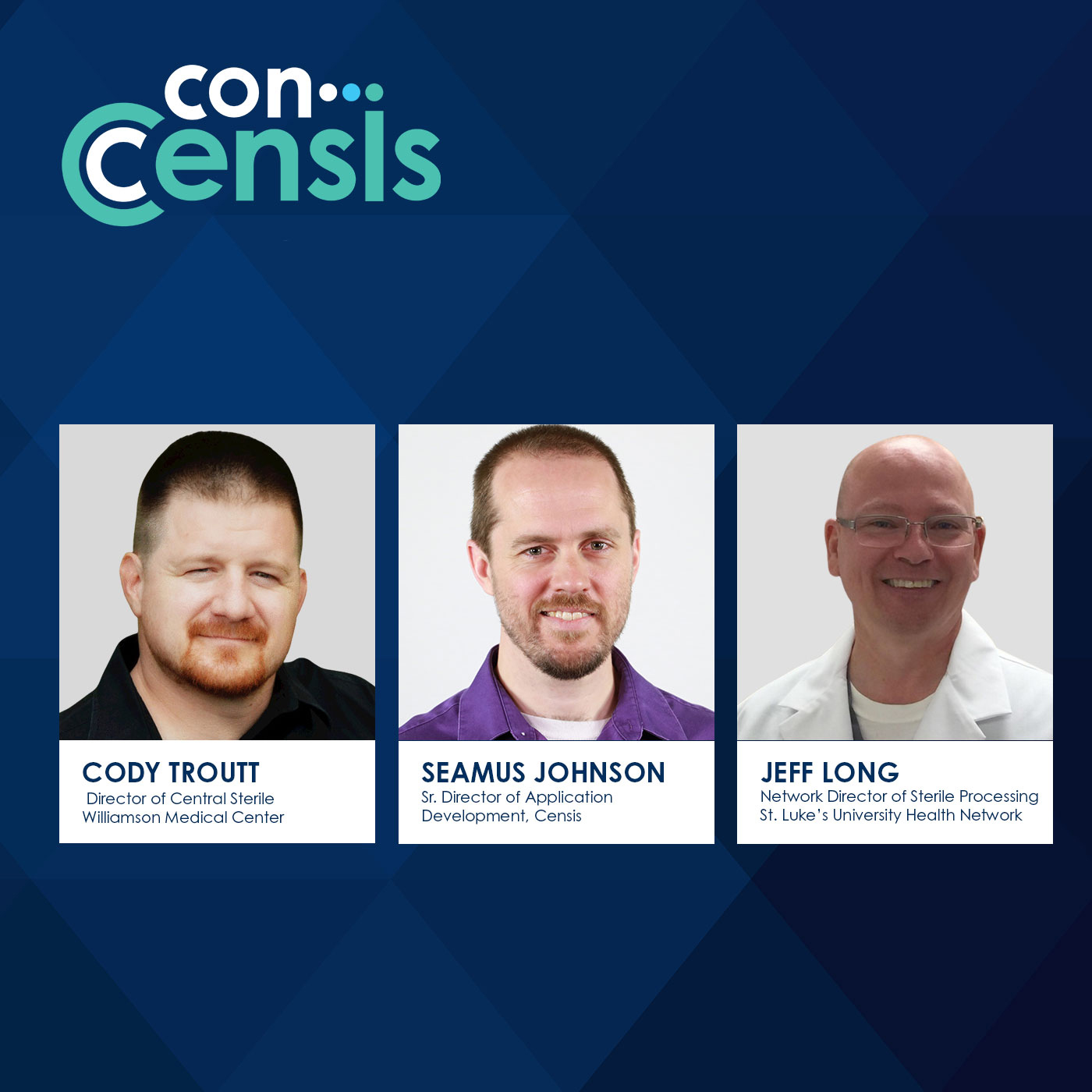From Managing Workforce Shortages to Improving Decision-Making, Veterans Share Valuable Insights and Solutions
Sterile Processing Departments (SPD) are facing acute labor shortages, forcing personnel to do more with fewer resources. Increased responsibilities and difficulty finding and retaining qualified employees to manage critical tasks is hard to solve. Tack on productivity requirements to sterilize instruments from an estimated 52.4 million inpatient surgeries performed in the United States annually, and there is an urgent need for solutions to keep departments running and maintain quality and safety.
In the “State of The Union for Sterile Processing and Technology” podcast, produced by Censis Technologies, SPD veterans from Williamson Medical and St. Luke’s University Health Network shed light on challenges, creative solutions and the importance of technology for streamlining operations in today’s challenging climate. Highlights include:
Staffing Shortages Increase Costs
According to Cody Troutt, Director Central Sterile at Williamson Medical in Franklin, Tenn., before the pandemic, a job posting would need to be closed in two weeks due to the overwhelming volume of applicants. Nowadays, openings go unfilled for months.
Troutt relies on traveling technicians to fill open positions, but at high costs. Not only do traveling staff increase operating costs because they cost more, but they are also “losing experience and history because even the best traveling staff are on temporary assignment.” He believes traveling staff fill an important need, but don’t have the same “buy-in” as someone who lives in the community, whose children, parents, or siblings might be having a procedure at their facility.
Training Can Bridge the Skills Gap
Jeff Long, Network Director Sterile Processing at St. Luke’s University Health Network is hiring individuals with little to no SPD experience and investing heavily in training. When Long joined St. Luke’s University Health Network in November of 2021, vacancies were at an all-time high. One of the ways he got vacancy down from 25% to 12% is by focusing on personality and behavioral traits and teaching new hires institutional knowledge and critical skills. Consequently, Long said orientation and training times doubled from six to 12 weeks.
Data-Supported Decision Making
SPDs generate an enormous amount of data every day, but often lack the tools to access data and visualize what is happening in their departments, inhibiting decision-making. Both Long and Troutt, are using CensisAI2 Productivity, an interactive tracking and analysis technology to problem-solve and streamline operations.
Long used metrics from his system to identify how much staffing was needed, present a case to senior leadership and better utilize his resources across 12 sites. “We’ve gone from the red to green on every one of our sites now, because we have the right resources in the right place at the right time.”
Technology Improves Visibility, Communication and Productivity
SPDs need greater visibility into what is happening in their departments to quickly pinpoint issues and make necessary changes. Having technology that offers a bird’s eye view of operational processes is helping Long and Troutt improve communication, collaboration, and productivity.
“We use our tracking system as a tool to communicate with our employees,” said Long. Using data and graphs, he claims it’s easier to get employees involved, celebrate their hard work and help them to see areas where they can do better. Despite shortages, his team increased tray volumes by over 5,000 per month with the same amount of staff.
Troutt is also using technology to improve communication and productivity. Using dashboards, he said he can visually see the impact of schedule changes, share them with his team, and get their full support. Troutt claims recent schedule changes, “yielded positive results from productivity.”
To hear more about how Troutt and Long are navigating day-to-day operations of their SPD departments and finding solutions, listen to the three-part “State of The Union for Sterile Processing and Technology” podcast series.
About CensisAI2
CensisAI2 puts the power of artificial intelligence and actionable intelligence in the hands of SPD organizations delivering exceptional insights to achieve operational excellence across the enterprise.
For more information on CensisAI2, visit https://censis.com/solutions/ai2/. Plus, learn more about sterile processing and why it's such an important function of SPDs.


